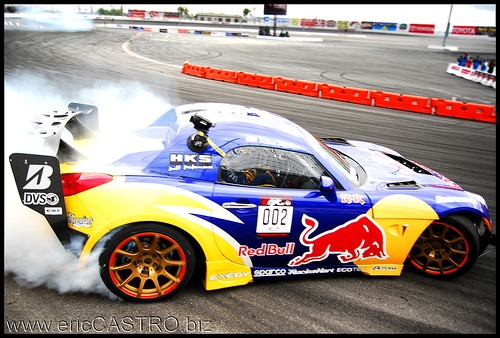
Rome had the Gladius, Ghengis had the re-curved bow, and Truman had the A-bomb. In recent years, the automotive aftermarket has experienced just such a revolution in weapons-grade power-adders, with turbo/supercharging at the head of the spear. Except for nitrous oxide, there is no single upgrade available on the market today that will beat the horsepower-to-dollar ratio of bolt-on forced induction.
A gasoline engine requires three materials to run: fuel, oxygen and a spark. Sparks are easy to make, and one could use a fire-hose to deliver fuel if desired, so the limiting reactant for any engine is the amount of air it can inhale. Turbo/Supercharging uses a compressor to pump more air into an engine than it would be able to ingest on its own, thus allowing it to burn more fuel and make more power.
A supercharger uses a belt, chain or gear drive attached directly to the crankshaft to spin the compressor. Older style Roots-Type superchargers (originally manufactured by McCulloch for diesel trucks) bolt directly to the engine's intake ports, and force air in with a set of rotors that run the length of the case. The advantages to this type of supercharger are instant throttle response and massive torque right from idle. The biggest disadvantage is inefficiency, as these compressors take a lot of power to turn and create a great deal of heat in the intake at high RPM.
Physically similar to Roots superchargers, this type uses a different compressor rotor design that increases efficiency at high RPM and decreases load in the low range. This type is unmatched for supercharger efficiency, except for centrifugal-types that tend to make power higher in the RPM band.
Due to its ease of installation and provision for using a turbo-style front mount inter-cooler (a radiator that cools the air after it leaves the compressor), this type of supercharger is probably the most popular in use today. Resembling a turbo with a belt attached, the centrifugal creates loads of power easily and efficiently. The only real disadvantage is that it does take a lot of power to turn, and so it will never match a similarly sized turbocharger for power potential or efficiency.
Turbos use exhaust gases to spin an impeller, which is attached via a shaft to the compressor turbine. Similar in concept to a jet engine, the turbo is a self-perpetuating power maker, in that the more air it pumps, the more comes out the exhaust pipe, causing it to spin faster and pump more air into the engine. The only downsides to using a turbo are cost and turbo-lag, a condition wherein the turbo is not spinning fast enough to make pressure at low RPM. Modern turbos have a great deal less lag than older ones, but lag is to be expected when using excessively large units on small displacement engines.